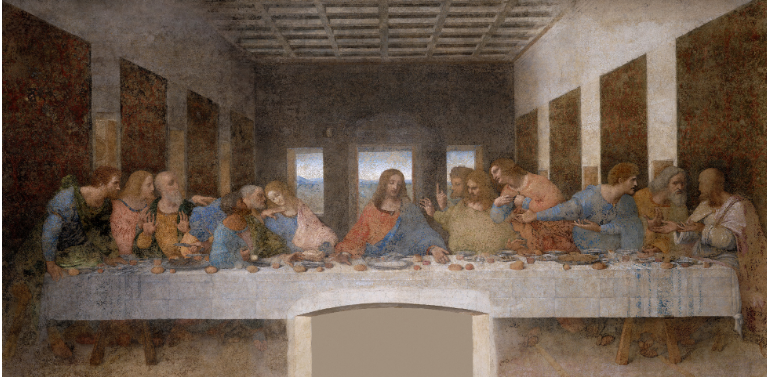The Spectacle of Deceit
- Kiara Aggarwal
- Jun 2
- 6 min read
By Simran Shoker

During a recent viewing of Adam McKay’s 2021 apocalyptic satire Don’t Look Up, I pondered on the media landscape’s role in sensationalising and overshadowing the truth. Those in power can create narratives to serve their own agenda, and throw in conspiracies while you’re at it and you have a perpetuation of misinformation, paranoia, and wild claims. With its jazzy soundtrack making light of situations, to the plot and satirical tones, the film left me thinking about the relationship between cinema and real-world conspiracies as a whole.
Now films like The Hunger Games and Snowpiercer depict dystopian worlds with conspiracies being embedded in the social fabric. They reflect real-world concerns over corporate control and the suppression of dissenting voices. However, Don’t Look Up diverges from the mainstream approach, using satire to showcase how half-witted conspiracy theories manipulate and distract from the real issues at hand, albeit the end of the word. From common conspiracies like alien invasions and flat earthers theories, to debates about climate change and environmental degradation, the extremes of those who readily believe in these narratives, and those who dismiss them outright, is a division that mirrors the deepening divide in how society processes truth and misinformation.
What I found particularly striking was the film’s emphasis on peer-reviewed content. This is, of course, expected, as the film revolves around hard scientific evidence. Dr Randall Mindy remarks that people want “peer-reviewed data, charts,” but it doesn’t fit into the “fun and lively” format that the news hosts interviewing Randall want, but “maybe the destruction of the entire planet isn’t
supposed to be fun. Maybe it’s supposed to be terrifying. And unsettling.” I did find the theme of reviewed evidence striking close to me, especially since many assignments at my university stress the importance of peer-reviewed journals. It became more eye opening on how essential it is to have trusted verified knowledge, and how the absence of such credible sources, or the prioritisation of content for entertainment, can have disastrous consequences.
While it may be iconic to have Meryl Streep as a president, the politically driven leader reflects the polarisation in the real world. We see a wide shot of her character President Orlean holding a press conference aboard a U.S Navy vessel, a bold location might I add. She is surrounded by military officials, waving flags, and a loud, dramatic soundtrack. The shot blazes with lights and colours that span the American blues and reds, just screaming patriotism. The scene is shot like a high-stakes action movie, but it’s all a PR spectacle. President Orlean announces her plan to mine the comet for profit, not destroy it. This exploitation of economic gain over saving humanity can mirror the political divide we see in the real world, where ideologies clash and thereby overshadow the urgency of addressing critical issues. Much like how Streep’s character tries to dismiss the facts about the comet in the film for personal gain, other movies like Vice and The Big Short use the exaggerated narratives to show the dominant ideologies, and the personal and political gains that stem from manipulation.
The film’s depiction is not limited to Streep’s character. Dr Randall Mindy and Kate Dibiasky serve as the truth-bearers, representing the voices of reason amidst the chaos. They also serve as an allegory for how experts such as scientists, journalists, and other truth tellers, are often drowned out by louder, more sensational voices. Their characters, initially dismissed as mere alarmists, embody
the struggle of real world experts trying to navigate between objective facts and popular narratives.
What’s interesting to me as well is the film’s stark comparison to this year’s critically acclaimed film Mickey 17, directed by Parasite director Bong Joon Ho. As my initial reason for dropping by the cinema to watch this film was to understand the hype from his previous films, I realised that this film, just like Don’t Look Up, dives into the sci-fi comedy satire genre. This film concerns itself with
the value of human lives, with Robert Patterson’s character Mickey being one of the Expendables. This is a key aspect of the film, where these Expendables are a job role that humans can apply for to help with research and exploring other planets such as Nifelheim, which allows them to be genetically reprinted. Basically, they’re immortal.
The foundational aspects of this film is class and the treatment one gets from society. While we consume conspiracies in the media everyday, a big chain of conspiracy theories tend to be on governments and politicians. I say this because theories can have some roots to reality, or be a bold comment about reality. Parallel to Meryl Streep’s political character in Don’t Look Up, Mark Ruffalo’s character in Mickey 17 is the antagonistic dictator-figure who very much prioritises himself over the people he leads. And if we really be honest, he is very Trump-coded. His character Marshall proposes a trial-run of human printing away from Earth, as a means to use the abomination of Expendables for the “common economic benefit”, all for the sake of public service. We also see shots that span from people living off rations, to the esteemed apartments of the rich, with their lavishly decorated furniture and fancy meals for them to eat. This highlights the ongoing divide between the classes, and the effects of a dictatorship.
While Don’t Look Up shows the overshadowing of truth, Mickey 17 just shows the truth, the reality, that the people who aren’t rich think they deserve the treatment of being taken advantage of. It shows the extent to which manipulation can fuel political gain. We watch the montage of Mickey being tested over and over again. Injected with experimental antidotes, pushed out into the freezing terrain of Nifelheim. There’s a particular scene where he’s coiled into a fetal position in a tank, freezing, almost clothless, as all the scientists are out of the room in a corner playing games. Nasha, who is a biologist aboard the mission to Niflheim, is one of the only characters that sees Mickey as a human, beyond an expendable. In this scene she enters the tank to cradle him in her arms as the poison injected in him for experimentation slowly kills him. I was extremely moved when seeing this scene, because although Mickey is a literal expendable, she stays with him to comfort him, make him feel at ease, make him feel not alone. In a world where sacrifice is everywhere, Nasha stands as a figure of defiance and empathy, a voice of resistance against the dehumanisation of society.
Mickey’s character ties into the broader themes of manipulation that parallels Don’t Look Up with the justification of exploitation. The role of an Expendable is far more insidious than it is showcased. It reveals how even in structured institutions, there’s a dissonance between what people are told and what is actually happening. Mickey’s journey becomes symbolic as it’s ultimately a fight against the idea of the greater good that is used as an excuse to dehumanise the lower class.
Whether there will be a discourse cyclone or a nihilistic acceptance of the status quo, the multitude of conspiracy theories will undoubtedly grow as the media landscape continues to expand. Cinema, in all its forms, plays a crucial role in both reflecting and influencing this cycle. More modern films like Don’t Look Up and Mickey 17 are a mirror to the current state of affairs, where truth is obscured by sensationalism, and truth is hidden under layers of propaganda, an environment that conspiracy thinking thrives in. The question remains then: will cinema serve as a catalyst for critical thinking, or will it only further perpetuate the narratives that keep us divided?



Comments